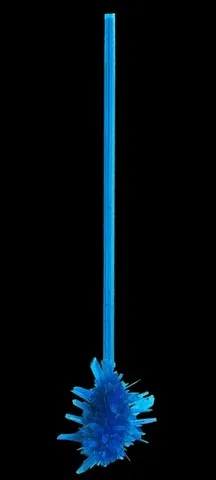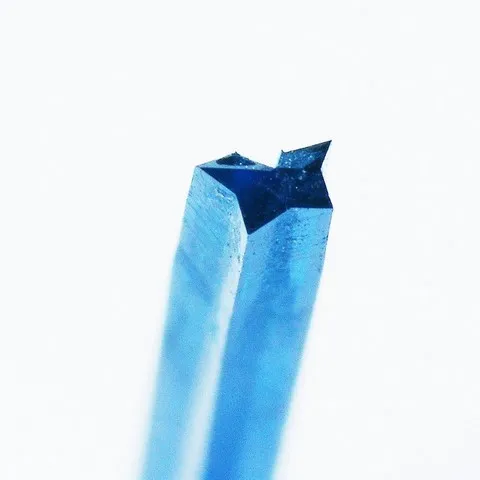PENTAGONITE
Class : Silicates
Subclass : Phyllosilicate
Crystal system : Orthorhombic
Chemistry : Ca(VO)Si4O10 . 4H2O
Rarity : Extremely rare
Pentagonite is an extremely rare mineral, dimorphic to cavansite and of a higher temperature than the latter. It is found in cracks, cavities and vacuoles of basalt breccias and andesitic tuffs where it is associated with various zeolites. It is a mineral that owes its name to its cyclic twin with a 5 pseudosymmetry order which produces pentagonal sections, however almost never observable in nature. Pentagonite is very similar to cavansite, it has the same bright blue color, the only difference is that its crystals are much more developed and can reach several centimeters. It presents as acicular crystals in the form of isolated fine blades or in a group then forming magnificent urchins and it is often associated with cavansite. Because it is vanadium-rich composition, it can theoretically constitute an ore of this element, however because of its color and its great rarity, it is a mineral much sought after by mineral collectors.
Pentagonite in the World
Pentagonite is also reported in the USA at Owyhee Dam, Malheur Co., Oregon, the type-locality, it is found in sub-millimetric twinned crystals.
Pentagonite in France
This mineral is not present in the French underground.
Twinning and special forms
The few large Indian twinned crystals show a delay in the looping. The basal section is well pentagonal (5-branched star), however, the end has a branch very briefly sketched (or beveled), whose development is complete at the base of the crystal.
Fakes and scams
No fake inventories for this species, however, cavansites can sometimes be sold for pentagonite to justify higher prices, see our article on this here.
Hardness : 3 to 4
Density : 2.33
Fracture : Fibrous
Streak : White-blue
TP : Translucent to transparent
IR : 1.533 to 1.547
Birefringence : 0.014
Optical character : Biaxial -
Pleochroism : Blue to green
Fluorescence : None
Solubility : Acids
Magnetism : None
Radioactivity : None







